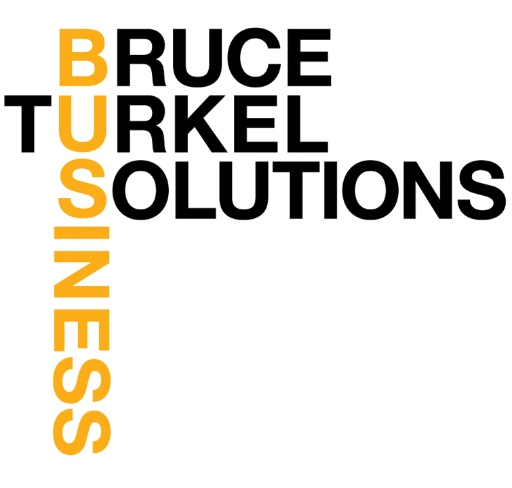Is Brand USA Good or Bad? The Truth About Belief
Branding isn’t about morality. It’s about the stories people believe and the promises they expect.
Click HERE to watch:
I’ve had a lot of interesting responses to the last couple of blogs I’ve posted on the USA’s brand, belief, and truth (you can find them HERE). If you missed them, they focused on the weakening of brand United States, and how the country’s actions—economic, political, and otherwise—are devaluing the way that brand is perceived around the world.
Marc Davison, a brand expert and thoughtful reader, was compelled to weigh in. He argued that brands are inherently good because they’re built on trust, coherence, and promise-keeping. Therefore, calling a brand a “bad brand” because it doesn’t have those things is a misnomer.
I responded that I agree with Marc on the fundamentals. When it comes to brands, coherence matters, consistency matters, and promise-keeping is critical. But Marc and I part ways on one central idea: the notion that brands are “inherently good.”
A brand is not good or bad because of its characteristics; it is good or bad because of what people believe about it.
But first, a story:
What a Pair of $1,000 Shoes Taught Me About Branding, Belief, and Truth.
Years ago, I was working with a luxury fashion client in Milan. We were walking through their flagship store when my host picked up a pair of shoes that retailed somewhere north of $1,000.
“Beautiful, right?” he asked.
I nodded. The shoes were beautifully made: soft leather, elegant shape, and perfect stitching.
He smiled and said, “You know what makes these shoes worth thousands of dollars?”
I assumed he’d say the best craftsmanship. Or Italian design. Or maybe the priciest Florentine leather. Probably all of the above.
Instead, he said, “Belief. Someone believes they’re worth the price. Therefore they are.”
That is brand storytelling. Not the look. Not the leather. Not the labor. The belief.
The Truth of the Belief Behind Powerful Brands
Simply stated, brands serve as emotional shortcuts. They tell us what to expect. They help us make decisions. They reflect the stories we tell ourselves about quality, purpose, and meaning.
But belief isn’t always beautiful.
Nazi Germany and the Brand Power of Coordinated Storytelling
The German Nazi party built one of the most powerfully devastating brands in history. It was fueled by propaganda and reinforced through strict visual and verbal control: meticulously designed symbols, uniforms, slogans, and rituals. Each was coordinated to shape a single story and burn it into the minds of a nation and the world.
That story led to some of the worst atrocities in human history. And yet, despite its barefaced barbarity, the brand itself remains instantly recognizable. Not because it was good. But because it was blatant. And because it was believed.
Read more about Nazi propaganda
Communism, Consistency, and Broken Promises
Communism, as branded by Stalin’s USSR, Mao’s China, and Castro’s Cuba, was also built with clarity, slogans, flags, and iconography. Those regimes made very specific brand promises. And they broke them. But the brand still stuck, for better or worse.
The same goes for modern regimes including Iran, North Korea, and Venezuela. Each tells a story. Each makes a promise. Each builds emotional resonance, even if that resonance is fear, suspicion, or hopelessness.
Why Belief Doesn’t Equal Virtue
In contrast, countries like Switzerland and New Zealand have cultivated positive brand equity through stability, transparency, and trust.
None of these brands exists because they’re virtuous. They exist because they’ve been defined, repeated, and reinforced. As we’ve seen, a brand is not defined by its moral compass. It is defined by what people believe about it.
The Erosion of Brand USA
The United States has long been one of the most admired brands in the world. It is built on the ideals of liberty, opportunity, innovation, and leadership. We’ve never been perfect, perhaps, but we’ve been consistent enough to create belief in the American Dream around the globe.
But when those ideals are blatantly violated, the brand suffers. When policies contradict values, when messaging fractures the storytelling, and when consistency breaks down, belief in the brand erodes.
Of course, the brand still exists. It’s just not the same brand people once believed in.
So, Are Brands Good or Bad?
Brands are not inherently good or bad because they are not moral entities. Brands are vessels of perception. They contain what we put into them. And they become what people believe them to be.
Some brands inspire trust. Others provoke dread. Some encourage aspiration. Others cement fear.
The question isn’t whether a brand is good or bad. The question is, what story is the brand telling? And who believes it?
Read more on how your brand tells a story
The job of constructing a brand isn’t just to design one that looks good. It’s to create a brand that earns belief. That’s the challenge for every person, every company, and every country working to build something meaningful.
If you’re not telling your story with clarity, someone else will tell it for you.
I keynote at conferences around the world, helping organizations build brands that matter and tell stories that stick. I still have a few dates open in 2025. If your team is looking for clarity, consistency, and creativity, we should talk.
You bring the mission. I’ll help you shape the belief.
You can learn more at www.bruceturkel.com


Bruce you hit on some extremely important points on the connection between messaging and leadership. Unfortunately, some leaders of today, even at the highest levels, don’t understand these concepts. Meanwhile we’ll just have to watch the circus!
Bruce,
Very strong piece which can benefit any and all organizations. Message strategy and effective communications are so critical in every thing that we do. Thank you.
One of your best blogs yet …
Thank you Stoney!
Seriously, this is best and most clarifyiing description of branding I’ve ever read. What’s especially clear is realizing that brands are not inherently good or bad, but that it’s about perception. The countries used as examples of branding’s emotional resonance tell a story that’s hard to read, especially as it relates to our own. Truly an excellent article, Bruce.
Thank you Mace. I appreciate your kind words.
Agree 100%! Consistency is fundamental to building both trust and belief in a brand. Any departure from established patterns and expectations can fracture that trust and undermine the audience’s belief in the brand.
We’re getting a masterclass in exactly that right now, Deb.
Excellent post!
Thank you Andrew!